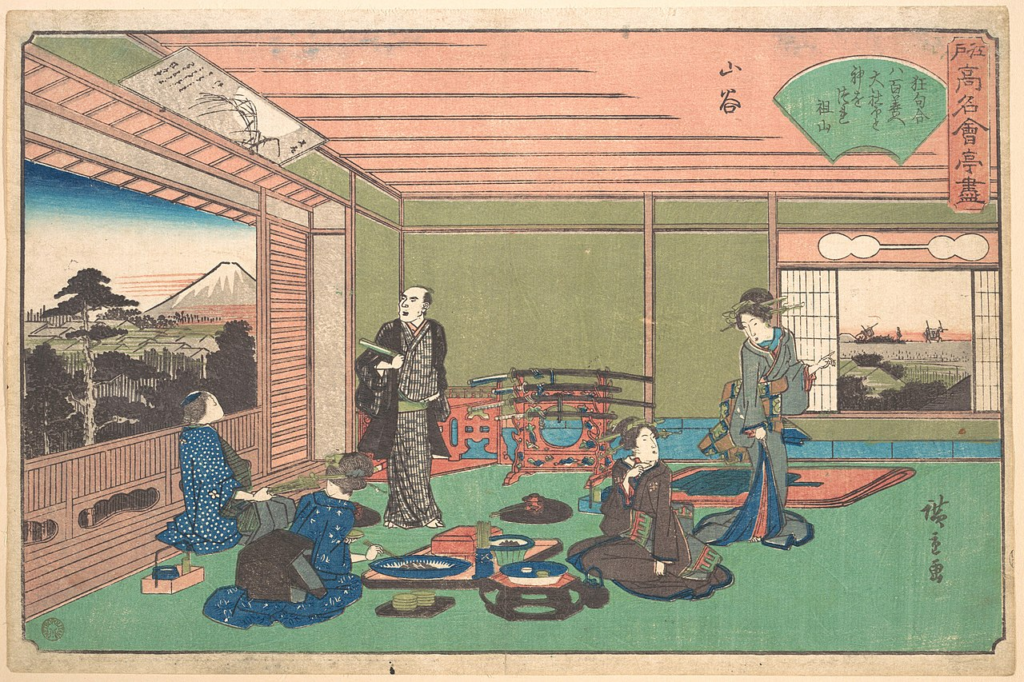
A Culinary Journey Back in Time: The Japanese Food Exhibition
The Japanese Food Exhibition recently concluded. The exhibition was exciting to me, as I am interested in the food of the Edo period. One sheet of paper caught my eye.
https://washoku2023.exhibit.jp/
Edo’s Answer to the Michelin Guide: A Historical Gourmet Ranking
The guide is a gourmet guide to Edo (present-day Tokyo), and it rates restaurants in the same way that sumo wrestlers are ranked in the rankings. Does this mean the Michelin Guide of the Edo period? When I thought about this, it occurred to me. Are there any restaurants still in existence? I decided to read some of the contents.
The Birth of Edo’s Restaurant Culture Post-Meireki Era
When were restaurants born in Edo in the first place? When Edo was first established, there were no restaurants, and even people of high rank had to bring their lunch boxes when going out. In the great fire of the Meireki Era (1657, the so-called Furisode Fire), restaurants began to appear in Edo. This was to fill the stomachs of the many people who had gathered for the reconstruction effort.
One hundred years later, in the latter half of the 18th century, the city had become such a place that it was written, “Every five paces there is a building, and every ten paces there is a pavilion, but none of them is a restaurant).
Exploring the Sumo-Inspired Ranking of Edo’s Restaurants
In such a situation, restaurants have started to be rated like a ranking chart of sumo wrestlers. In addition to the images introduced here, many other ranking tables have been created (not only for restaurants but also for different genres such as side dishes, rice production areas, sake, craftsmen, profitable businesses, etc.). What about the yokozuna? Where is Yokozuna? You may be thinking, “What about Yokozuna? At this time, yokozuna was the title of the ozeki to whom the rope was attached, and the highest rank on the ranking chart was ozeki. The title “yokozuna” did not appear on the ranking chart until the May 1890 tournament.
Yaozen: A Culinary Landmark Across Centuries in old tokyo
The first restaurant on the banzuke we will be dealing with is Yaozen. This restaurant is depicted in many paintings and was called the finest culinary teahouse even back then. It has been in existence for more than 300 years. As a pioneer of high-class ryotei, it played an essential role in forming Edo’s culinary culture.
There are many other restaurants besides Yaozen listed in the ranking list. Still, there is no end to the number of restaurants that could be introduced individually. The “Hyakkawa” at “Ukiyo Koji” (located in Nihonbashi) in the upper right, far left, is known for being in charge of banquet food at the time of Perry’s arrival (as is Yaozen, I hear) and is also the setting for the rakugo story “Momokawa.”
The fourth from the right in the lower right corner, “Umekawa,” is also depicted in a painting by Hiroshige Utagawa. The location is a little hard to read because of the graffiti, but it is “Ryogoku.” You can find other stores in Ryogoku.
In addition, there is an “Ebiya” in “Oji,” third from the right in the upper right corner. Oji does not have much of an image of a famous restaurant gathering in modern times (maybe I am just uninformed ><). It took a whole day to get to Oji from downtown Edo, but there must have been so many tourists in those days that such famous restaurants appeared.
Although this is only a tiny portion of the list, here is a ranking of the restaurants featured in the Japanese Food Exhibition.
(The image was cited from 料理屋番付 江戸時代後期 東京家政学院大学附属図書館 大江文庫蔵)


